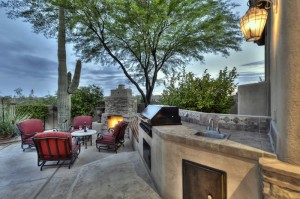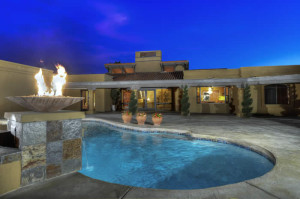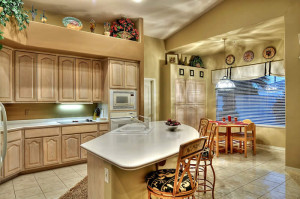 By Joe Szabo, Scottsdale Real Estate Team
The current real estate recovery is like a marathon. Last year, buyers and sellers sprinted out of the gates at full speed, fueled by low interest rates and affordable home prices. The press and social media were full of stories about limited housing inventories, bidding wars and multiple offers. In 2013, real estate was sexy and headline-worthy.
As we move into 2014, it’s clear we’ve only run the first few miles of this marathon. Last year’s excitement will surely wear off, and there will be a lot less flashy magazine covers, posts, tweets or evening news stories about real estate. Most experts predict a slower, steadier, more even “pace” this year in most of the country, even as interest rates and home values inch up.
This doesn’t mean 2014 won’t be as good a time to buy real estate. It helps to look at the bigger picture and not get caught up in the micro stats or the latest headlines. Sure, we likely won’t see interest rates as low in 2014 as we did in 2013. But to put that into perspective, interest rates were as high as 18 percent in the 1980s, yet people still bought homes.
As you approach buying a home this year, it helps to focus on the long term by keeping the following five best practices in mind. These were best practices for home buying a generation ago. And they’ll most likely still be practical when the next generation of home buyers sprints out of the gate.
By Joe Szabo, Scottsdale Real Estate Team
The current real estate recovery is like a marathon. Last year, buyers and sellers sprinted out of the gates at full speed, fueled by low interest rates and affordable home prices. The press and social media were full of stories about limited housing inventories, bidding wars and multiple offers. In 2013, real estate was sexy and headline-worthy.
As we move into 2014, it’s clear we’ve only run the first few miles of this marathon. Last year’s excitement will surely wear off, and there will be a lot less flashy magazine covers, posts, tweets or evening news stories about real estate. Most experts predict a slower, steadier, more even “pace” this year in most of the country, even as interest rates and home values inch up.
This doesn’t mean 2014 won’t be as good a time to buy real estate. It helps to look at the bigger picture and not get caught up in the micro stats or the latest headlines. Sure, we likely won’t see interest rates as low in 2014 as we did in 2013. But to put that into perspective, interest rates were as high as 18 percent in the 1980s, yet people still bought homes.
As you approach buying a home this year, it helps to focus on the long term by keeping the following five best practices in mind. These were best practices for home buying a generation ago. And they’ll most likely still be practical when the next generation of home buyers sprints out of the gate.
How to Approach Real Estate in 2014 & Beyond By Joe Szabo, Scottsdale Real Estate Team
 By Joe Szabo, Scottsdale Real Estate Team
The current real estate recovery is like a marathon. Last year, buyers and sellers sprinted out of the gates at full speed, fueled by low interest rates and affordable home prices. The press and social media were full of stories about limited housing inventories, bidding wars and multiple offers. In 2013, real estate was sexy and headline-worthy.
As we move into 2014, it’s clear we’ve only run the first few miles of this marathon. Last year’s excitement will surely wear off, and there will be a lot less flashy magazine covers, posts, tweets or evening news stories about real estate. Most experts predict a slower, steadier, more even “pace” this year in most of the country, even as interest rates and home values inch up.
This doesn’t mean 2014 won’t be as good a time to buy real estate. It helps to look at the bigger picture and not get caught up in the micro stats or the latest headlines. Sure, we likely won’t see interest rates as low in 2014 as we did in 2013. But to put that into perspective, interest rates were as high as 18 percent in the 1980s, yet people still bought homes.
As you approach buying a home this year, it helps to focus on the long term by keeping the following five best practices in mind. These were best practices for home buying a generation ago. And they’ll most likely still be practical when the next generation of home buyers sprints out of the gate.
By Joe Szabo, Scottsdale Real Estate Team
The current real estate recovery is like a marathon. Last year, buyers and sellers sprinted out of the gates at full speed, fueled by low interest rates and affordable home prices. The press and social media were full of stories about limited housing inventories, bidding wars and multiple offers. In 2013, real estate was sexy and headline-worthy.
As we move into 2014, it’s clear we’ve only run the first few miles of this marathon. Last year’s excitement will surely wear off, and there will be a lot less flashy magazine covers, posts, tweets or evening news stories about real estate. Most experts predict a slower, steadier, more even “pace” this year in most of the country, even as interest rates and home values inch up.
This doesn’t mean 2014 won’t be as good a time to buy real estate. It helps to look at the bigger picture and not get caught up in the micro stats or the latest headlines. Sure, we likely won’t see interest rates as low in 2014 as we did in 2013. But to put that into perspective, interest rates were as high as 18 percent in the 1980s, yet people still bought homes.
As you approach buying a home this year, it helps to focus on the long term by keeping the following five best practices in mind. These were best practices for home buying a generation ago. And they’ll most likely still be practical when the next generation of home buyers sprints out of the gate.


 By
By 







 By
By 

